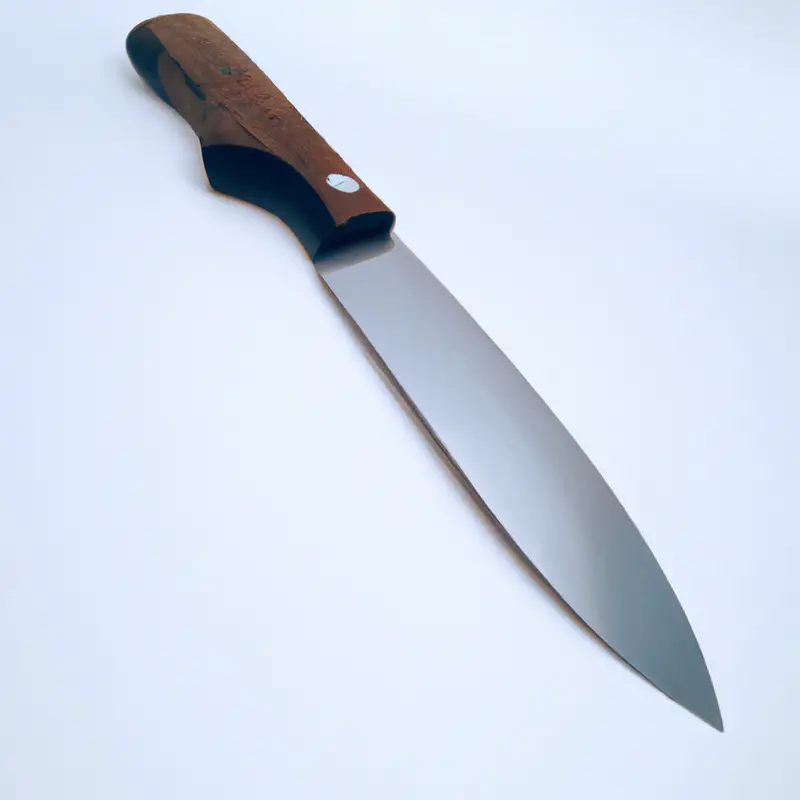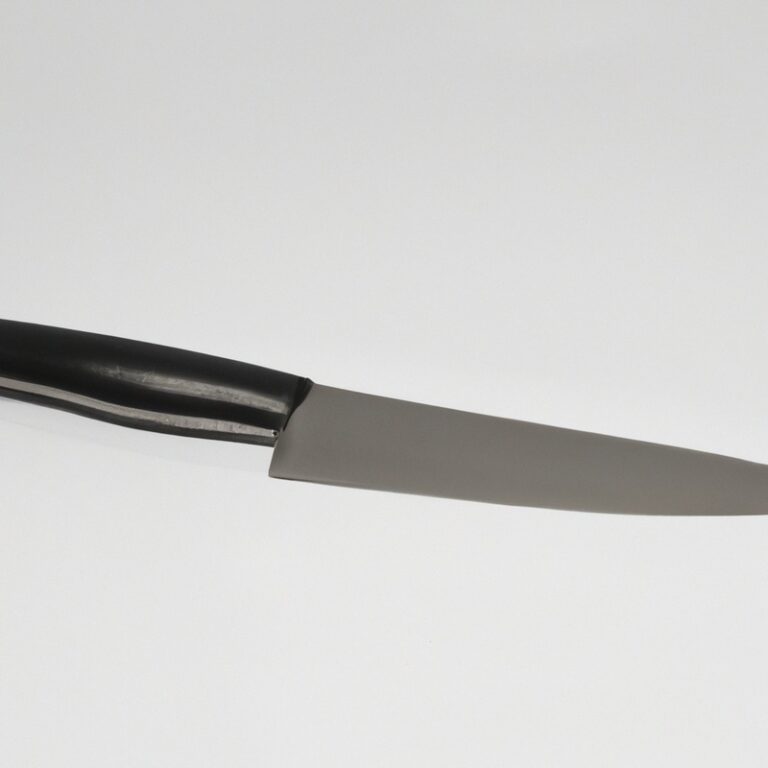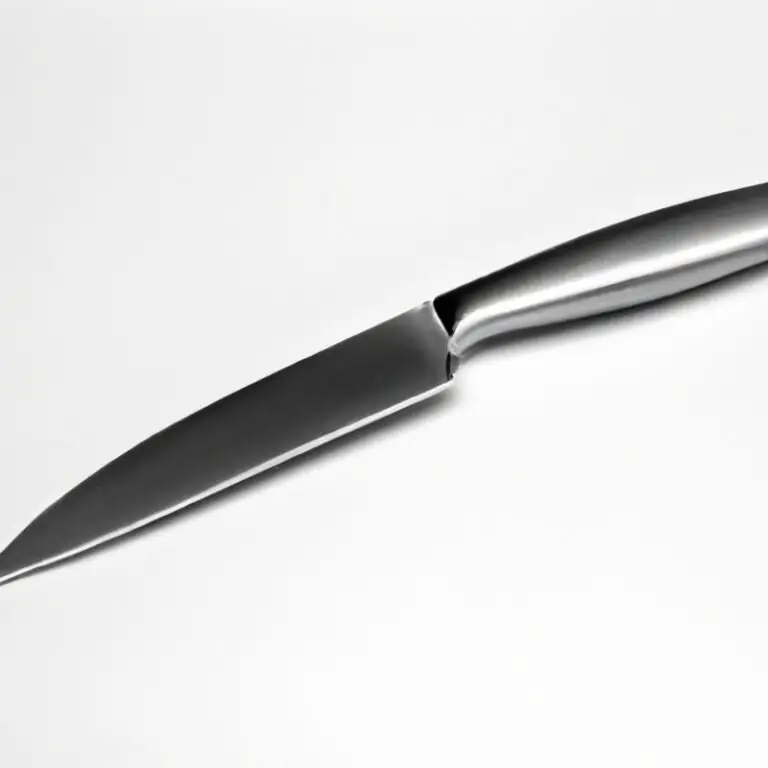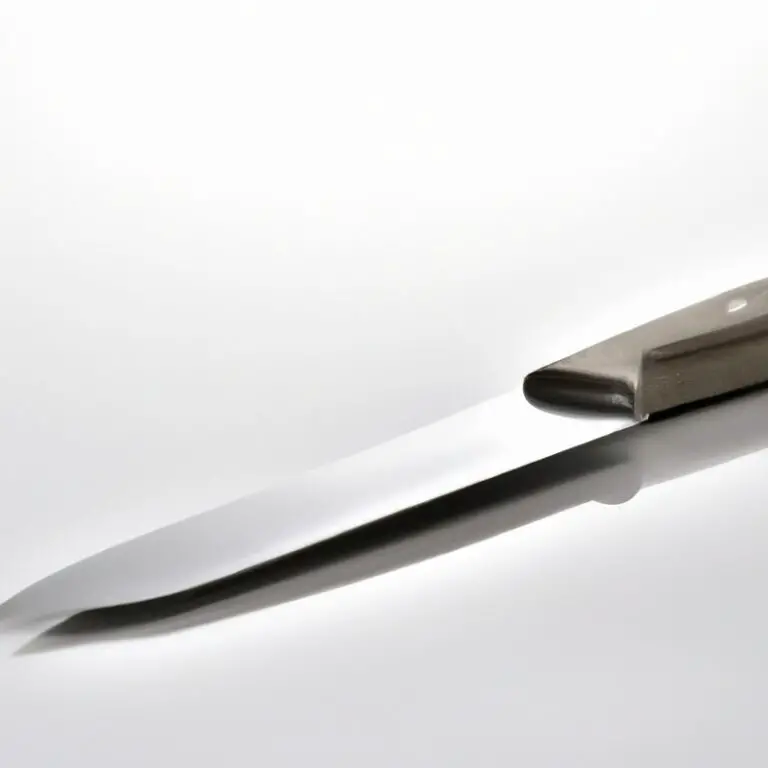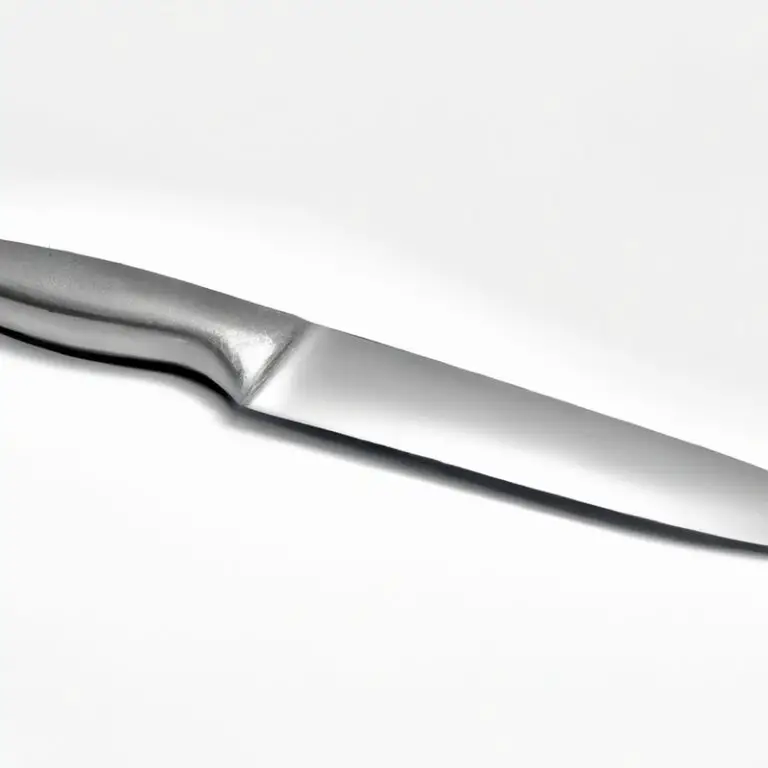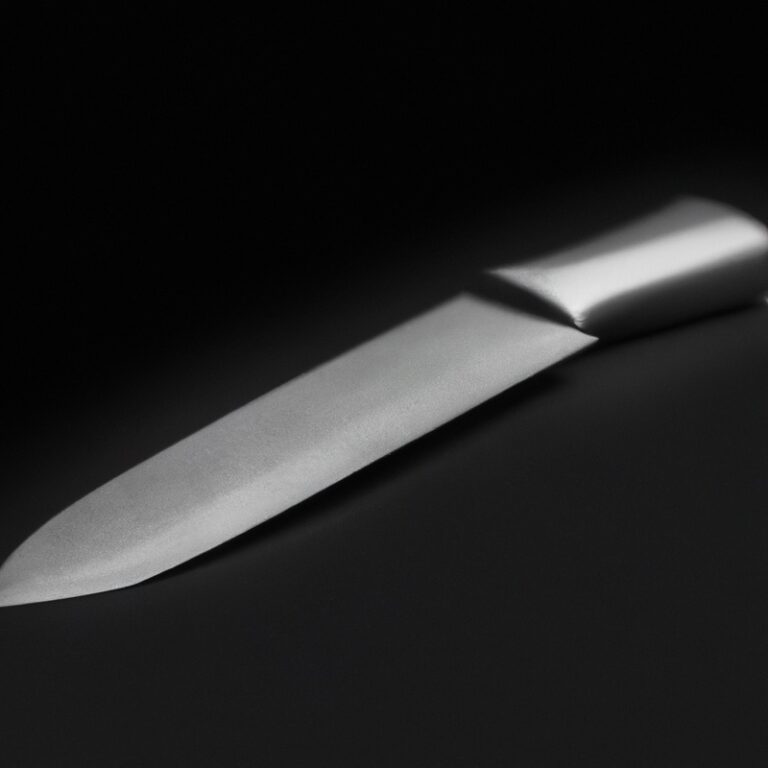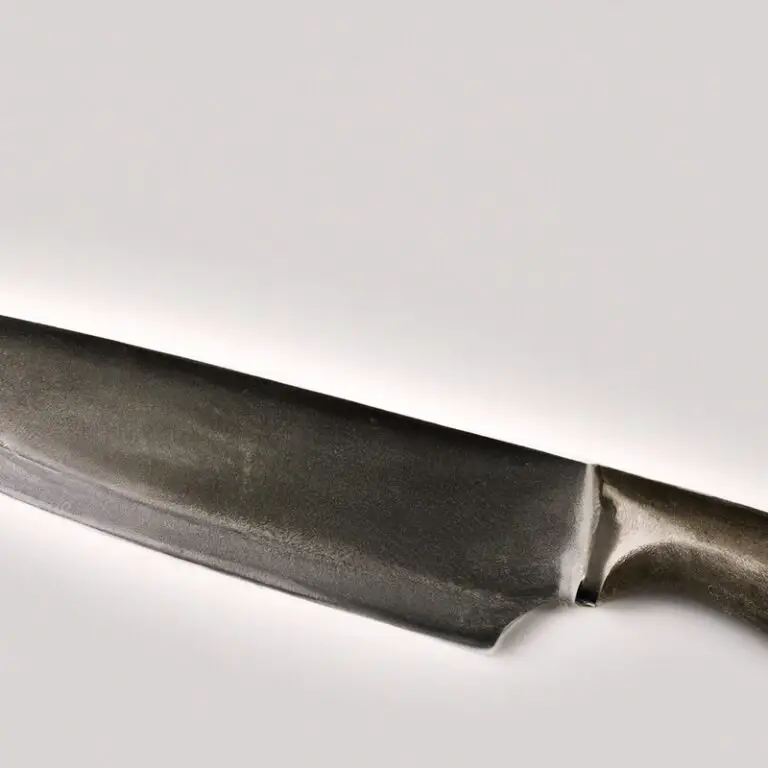Which Knife Steel Is Most Suitable For Carving Knives?
Key Takeaways:
- High-carbon stainless steel is the most suitable steel for carving knives due to its durability and corrosion resistance.
- Damascus steel is a popular choice for carving knives as it combines the benefits of high-carbon steel with a unique patterned appearance.
- Carbon steel provides exceptional sharpness for carving knives but requires regular maintenance to prevent rusting.
- Laminated steel, such as VG-10, offers a balance of sharpness and durability, making it a suitable choice for carving knives.
Are you tired of struggling with your carving knife, never quite achieving the precision and control you desire?
Well, I’ve got some good news for you.
The secret to a superior carving experience lies in the type of knife steel you choose.
But with the sea of options available on the market, how do you know which one is right for you?
Don’t worry, I’ve got you covered! In this article, I’ll take you on a journey to uncover the most suitable knife steel for your carving knives.
We’ll dive into the different types of knife steels, examine their strengths and weaknesses, and even hear from the experts on their top recommendations.
So, if you’re ready to take your carving to the next level, keep reading!
| Steel Type | Pros | Cons |
| Stainless Steel | Durable and resistant to corrosion | Not as sharp or edge-retaining as other options |
| High Carbon Steel | Very sharp and excellent edge retention | Prone to staining and can be difficult to maintain |
| Damascus Steel | Beautiful and unique pattern | May require more maintenance and care |
| Ceramic | Superbly sharp and stays sharp for longer | Brittle and prone to chipping or breaking |
Understanding different types of knife steels
Overview of popular knife steel options available in the market
There are various popular knife steel options available in the market.
Some common ones include:
- Stainless steel: Known for its corrosion resistance and ease of maintenance, stainless steel is a popular choice. It is durable and requires less frequent sharpening.
- Carbon steel: Carbon steel offers excellent sharpness and edge retention. It is tougher than stainless steel but requires regular maintenance to prevent rust.
- High carbon stainless steel: This type of steel combines the best of both worlds, offering the sharpness and edge retention of carbon steel with the corrosion resistance of stainless steel.
- Damascus steel: Known for its beautiful and unique patterns, Damascus steel is highly sought after by collectors. It is made by layering different types of steel together, resulting in a strong and visually appealing blade.
These are just a few examples of the knife steel options available in the market.
Each steel has its own characteristics, so it’s important to choose one that suits your specific needs and preferences.
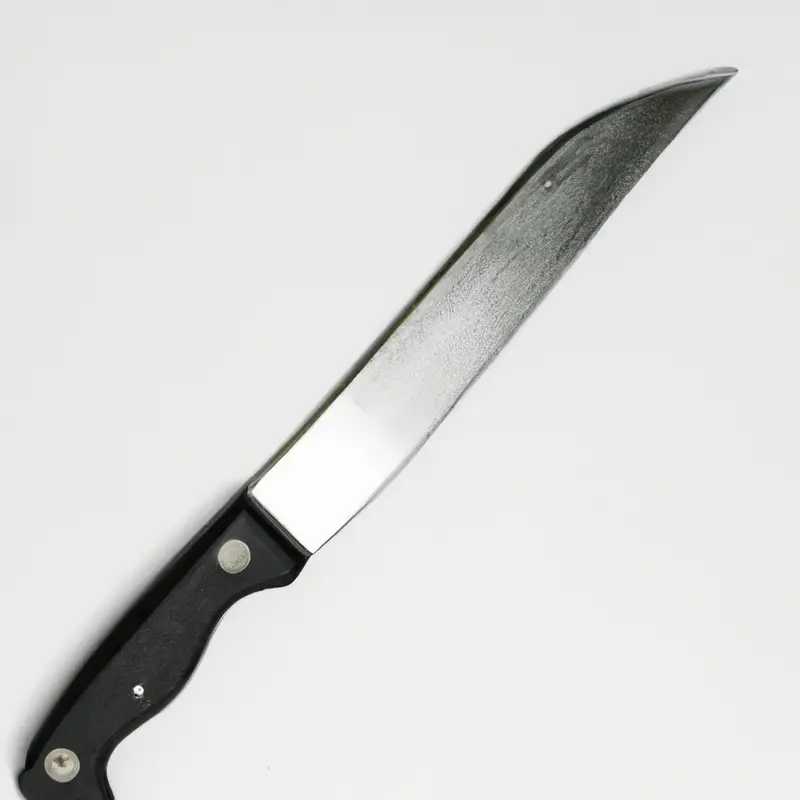
Factors to consider when choosing knife steel for carving knives
Strength and durability of the steel
When choosing a knife steel for carving knives, the strength and durability of the steel are key factors to consider. You want a steel that can withstand the rigors of carving, such as cutting through tough meats or dense vegetables.
Look for steels with high hardness ratings, as these tend to be more durable and resistant to wear and deformation.
Additionally, consider the steel’s toughness, which refers to its ability to withstand impacts or forces without cracking or chipping. A combination of high hardness and toughness will ensure that your carving knife remains strong and durable over time.
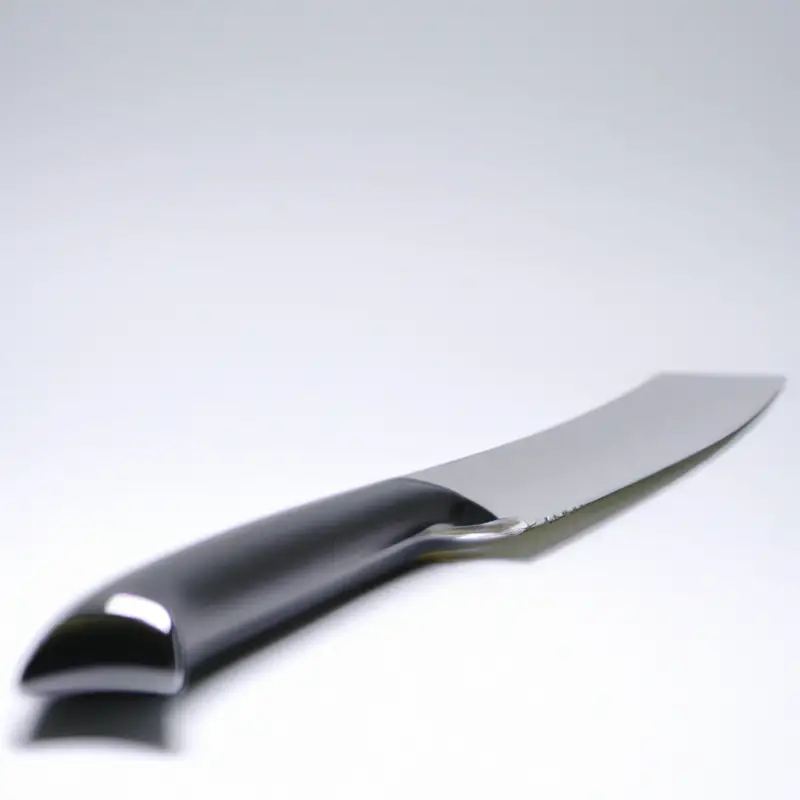
Ease of sharpening and maintenance
Ease of sharpening and maintenance is an important factor to consider when choosing knife steel for carving knives.
Some knife steels are easier to sharpen and maintain than others, making them more convenient for regular use.
Stainless steel, for example, is known for its low-maintenance properties, as it is resistant to corrosion and rust.
On the other hand, high carbon steel requires more care to prevent corrosion, but it can also be sharpened to a finer edge.
Ultimately, the choice depends on personal preference and willingness to invest time in maintenance.
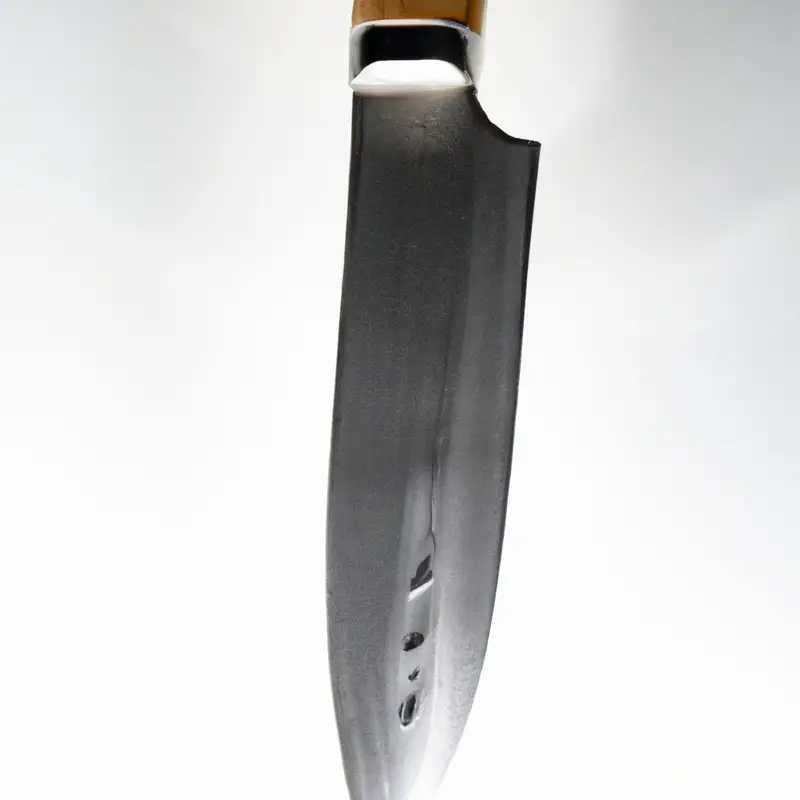
Corrosion resistance and rust prevention properties
When it comes to choosing knife steel for carving knives, one important factor to consider is its corrosion resistance and rust prevention properties. A knife that is prone to corrosion and rust can have a negative impact on its performance and longevity.
Stainless steel is a popular choice for carving knives due to its high resistance to corrosion.
It contains chromium, which forms a protective layer on the surface of the blade, preventing rust from forming. Carbon steel, on the other hand, requires more maintenance to prevent rusting, but it can offer superior edge retention capabilities.
Edge retention capabilities
When choosing knife steel for carving knives, it’s important to consider the edge retention capabilities.
This refers to how long the blade can maintain its sharpness before needing to be sharpened again.
Different types of steel have varying edge retention capabilities.
High-carbon and stainless steel are popular options with good edge retention.
Damascus steel, known for its beautiful patterns, also offers decent edge retention.
Other specialty knife steels, such as powdered or laminated steels, can provide excellent edge retention as well.
Ultimately, the choice will depend on your personal preferences and intended use for the carving knife.
Comparison of knife steels for carving knives
Carbon steel vs Stainless steel for carving knives
Carbon steel and stainless steel are two popular options for carving knives. Carbon steel is known for its excellent edge retention and sharpness.
It is easy to sharpen, allowing for precise cuts.
However, it requires regular maintenance and can rust if not properly cared for. Stainless steel, on the other hand, is highly resistant to corrosion and requires less maintenance.
It is also more durable and less likely to chip or break.
However, it may not hold its edge as well as carbon steel and can be more difficult to sharpen. Ultimately, the choice between carbon steel and stainless steel comes down to personal preference and the specific needs of the user.
High carbon stainless steel vs Damascus steel for carving knives
High carbon stainless steel and Damascus steel are two popular options for carving knives.
High carbon stainless steel is a durable and corrosion-resistant option that combines the benefits of high carbon steel and stainless steel.
It offers excellent edge retention and is relatively easy to sharpen.
This makes it a great choice for those who value a long-lasting, low-maintenance carving knife.
On the other hand, Damascus steel is known for its unique and beautiful patterns.
It is made by layering and forging multiple types of steel together.
Damascus steel is known for its exceptional sharpness and edge retention capabilities.
However, it may require more maintenance to prevent rust and corrosion.
Ultimately, the choice between high carbon stainless steel and Damascus steel comes down to personal preference.
If you prioritize durability and ease of maintenance, high carbon stainless steel is a solid option.
If you appreciate the aesthetic appeal and are willing to invest more time in maintenance, Damascus steel can be a great choice.
Other specialty knife steels suitable for carving knives
When it comes to carving knives, there are a few specialty knife steels that are worth considering.
One option is the high-speed steel (HSS), which offers excellent edge retention and durability.
Another choice is laminated steel, which combines different types of steels to provide both strength and sharpness.
Lastly, powdered steel, like SG2 or ZDP-189, is known for its exceptional hardness and edge retention.
These specialty steels offer unique qualities that can enhance your carving experience and provide long-lasting performance.
Recommended knife steel for carving knives based on user preferences
Professional chef recommendations
Professional chefs typically recommend carving knives made with high carbon stainless steel. This type of steel offers a good balance of strength, durability, and corrosion resistance, making it ideal for heavy use in the kitchen.
High carbon stainless steel also retains its sharpness for longer periods, ensuring precise and clean cuts while carving.
It is important to note that different chefs may have their own preferences, so it’s always a good idea to try out different knife steels and choose the one that feels most comfortable and effective for you.
Home cook preferences
Home cooks often prefer stainless steel for their carving knives due to its low maintenance and corrosion-resistant properties. Stainless steel knives are easy to clean, require minimal sharpening, and are more budget-friendly compared to other options.
Additionally, many home cooks appreciate the versatility of stainless steel as it can handle different cutting tasks beyond carving.
Ultimately, the choice of knife steel for carving knives comes down to personal preference and the specific needs of the home cook.
Budget-friendly options
When it comes to budget-friendly options for carving knife steel, there are a few choices that won’t break the bank.
One popular option is 420 stainless steel, which is affordable and offers decent durability and corrosion resistance.
Another budget-friendly choice is 7Cr17 stainless steel, which is known for its strength and toughness.
Lastly, AUS-8 stainless steel is a reliable and affordable option that offers good edge retention and ease of sharpening.
These budget-friendly knife steels can be a great choice for home cooks and beginners looking for quality carving knives without spending a fortune.
Care and maintenance tips for carving knives with different steel types
Proper cleaning techniques
Proper cleaning techniques for your carving knife are essential to maintain its longevity and performance. Here are some straightforward steps to ensure your knife stays in top condition.
- Hand wash: Always wash your carving knife by hand with warm, soapy water immediately after use. Avoid submerging it in water for long periods as it can lead to damage or rust.
- Scrub gently: Use a soft sponge or cloth to gently scrub the blade, focusing on removing any food residues or stains. Avoid using abrasive materials or harsh chemicals that can scratch or harm the knife.
- Dry thoroughly: After washing, dry the knife thoroughly with a clean towel to prevent moisture from sitting on the blade. Moisture can lead to corrosion, especially if the knife is made of carbon steel.
- Store properly: Store your carving knife in a knife block, sheath, or on a magnetized strip to protect the blade and prevent accidental damage. Avoid storing it in the sink or drawer where it can come into contact with other utensils.
Remember, proper cleaning techniques are essential for maintaining the quality and performance of your carving knife.
Sharpening methods and tools
When it comes to sharpening your carving knives, there are a few different methods and tools you can use. One popular option is a sharpening stone or whetstone, which requires wetting the stone and then running the blade across it at the correct angle.
Another option is an electric knife sharpener, which can quickly and easily restore the blade’s sharpness.
Finally, you can also use a honing rod or sharpening steel to maintain the knife’s edge between sharpenings. Whichever method you choose, it’s important to follow the manufacturer’s instructions and be cautious to avoid accidents.
Storing and handling guidelines for maintaining longevity
To maintain the longevity of your carving knife, proper storing and handling are key. Here are some guidelines to follow:
- Store your knife in a knife block or on a magnetic strip to protect the blade from damage and prevent it from coming into contact with other utensils.
- Avoid storing your knife in a drawer where it can rub against other knives or kitchen tools, potentially dulling or chipping the blade.
- Always clean and dry your carving knife thoroughly after each use to prevent moisture and bacteria buildup, which can lead to corrosion.
- Consider investing in a knife sheath or blade guard to provide extra protection for the blade when storing or transporting it.
- Handle your carving knife with care, avoiding excessive twisting or flexing of the blade, as this can weaken the steel and negatively impact its longevity.
Final Verdict
When choosing a knife steel for carving knives, several factors need to be considered.
Strength, durability, ease of sharpening, corrosion resistance, and edge retention are crucial for optimal performance.
While carbon steel offers excellent sharpness and edge retention, stainless steel provides better corrosion resistance.
High carbon stainless steel and Damascus steel combine the best of both worlds, offering strength, sharpness, and beauty.
Ultimately, the choice depends on personal preferences and budget.
Professional chefs often recommend specific steel types, while home cooks may have different preferences.
Regardless of the steel type chosen, proper care and maintenance, including regular sharpening and cleaning, will ensure a long-lasting carving knife.

